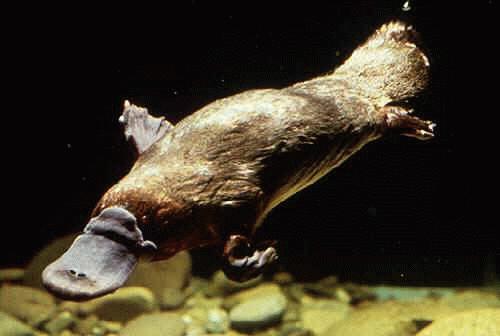There are some mammals that are venomous. There aren’t very many of them, but here’s a list of them.
- Solenodons – Look similar to very large shrews. They have venomous bites…the venom is delivered from modified salivary glands via grooves in their second lower incisors.
Platypus – Males have a venomous spur on their hind legs. Echidnas, the other monotremes, have spurs but no functional venom glands. Although not potent enough to be lethal to humans, platypus venom is nevertheless so excruciating that victims may sometimes be temporarily paralysed.

The venom appears to have a different function from those produced by non-mammalian species…its effects are not life-threatening to humans, but nevertheless powerful enough to seriously impair the victim. Since only males produce venom and production rises during the breeding season, it may be used as an offensive weapon to assert dominance during this period.
- Eurasian Water Shrew – Capable of delivering a venomous bite.
- Southern Short-Tailed Shrew – Possibly have a venomous bite.
- European Mole – The European mole, and possibly other species of mole,has toxins in its saliva that can paralyze earthworms, allowing it to store them for later consumption.
- Vampire bats – Secrete a powerful anticoagulant in their saliva.
- Slow Lorises – Brachial glands on the inside of the elbows of the slow loris secrete a brown exudate. This exudate is licked and becomes mixed with saliva. A protein in the secretion, which is similar to the allergen protein isolated from the domestic cat, may be introduced by the bites of slow lorises, resulting in anaphylaxis. Thus, it is questionable whether the slow loris should be considered truly venomous.
- Hedgehogs – Will anoint their spines with a range of toxic and irritating substances. They will sometimes kill toads and bite into the toads’ poison glands and smear the toxic mixture on their spines. Tenrecs, similar in appearance to hedgehogs but of a different line of descent, may also have evolved separately somewhat different self-anointing behaviour. Whether such self-anointing in hedgehogs and tenrecs is involved in defense, scent-camouflage, to appeal to the opposite sex, or a combination of these or other reasons is a debated topic.
So there you have it…fluffy, poisonous, mammalians.
by Eddie the Emu

